Everything a Homeowner Ought to Know About Landscaping Timbers
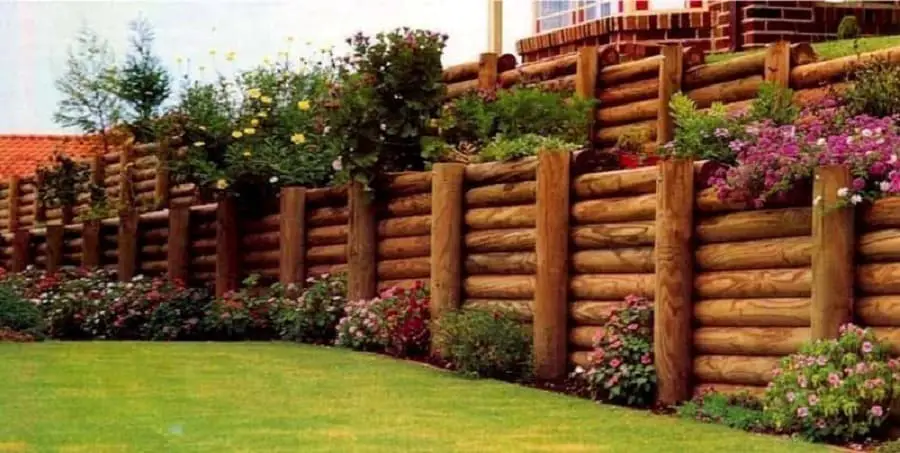
Wood backyard landscaping timbers
Quick Navigation
One of the greatest things about landscaping timbers, is that when used properly, they can turn even the ugliest of yards into a work of art. Working with landscape timbers can prove to be more than a little challenging for the average Do-It-Yourselfer. But, not to worry as long as you take your time, have the right information and tools, you will soon find yourself the king of landscaping.
How to Choose the Right Landscaping Timber
There is only one thing that will affect your choice of landscaping timber more than anything else. This is how you plan to use it. For example, lumber that is going underground is typically pressure treated. Others, such as redwood, cedar, and cypress are used for their beauty. Let's look at each of the most common types of landscape timber.
Redwood
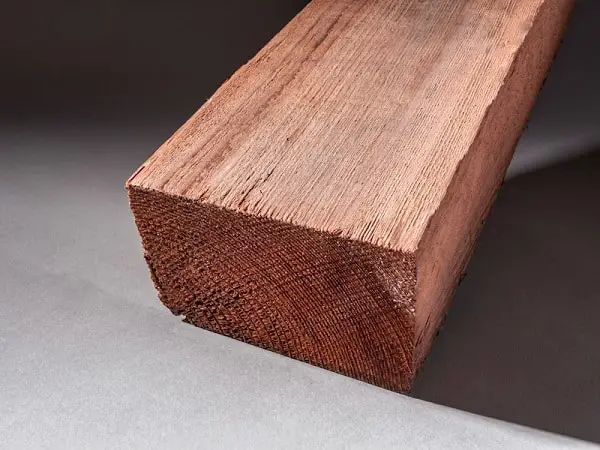
Image courtesy of Redwood Outlet
Many people choose redwood timbers for their natural rustic good looks. This wood is great for framing gardens, making outdoor furniture, decking rails, and many other projects.
Over the course of time redwood fades to welcoming brown/gray color. If you prefer the red color, there are sealants that can help.
Cypress

Image courtesy of Caribbean Teak
One of the best things about cypress, is that this wood is naturally resistant to rot. Those who live in the Southeast choose it over redwood due to availability and price. But this changes the further west you go and cypress
Cedar

Image courtesy of Carribean Teak
Like cypress, cedar is naturally rot-resistant and loved for being light in weight yet exceptional durability. Experts say you should only use common grade cedar for above ground purposes.
However, you can use heartwood cedar for posts and many near ground applications. It will fade to colors ranging from tan to light gray. If you apply sealant, it will turn dark gray. It can also be stained to any color you want.
Pressure Treated Lumber

Pressure Treated Lumber
Pressure treated landscaping timbers can be used both above and in the ground. The wood is soaked in a chemical preservative under pressure. The pressure is used to drive the preservative deeper into the center of the wood.
In most cases, the lumber is easy to spot as it has a greenish color to it and may feel damp to the touch. Never use pressure treated lumber or old railroad ties around your food gardens as they can leach toxic chemicals into the ground. Learn more about pressure treated lumber here.
Composite Landscaping Timbers
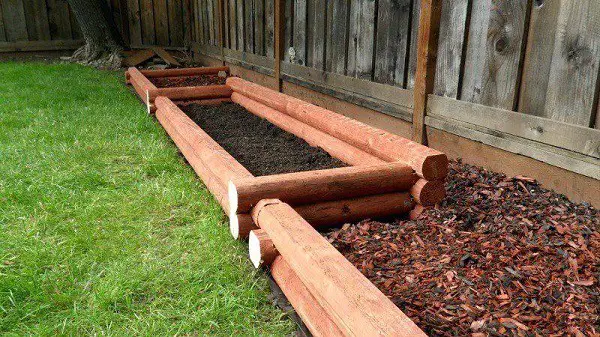
Composite Landscape Timbers
There is a wide variety of composite landscaping timber products on the market. Most look like wood, can be cut like wood, even act like wood, with one big difference, they last longer.
Some are made from wood fibers mixed with resins or plastics and then formed to shape. They come in a variety of colors, can be painted, and are very resistant to rot, decay, insects, and require no sealants.
These timbers are virtually maintenance free. The only thing you should ever need to do is wash it off with the hose from time to time.
How is Pressure Treated Lumber Created?

Pressure heated lumber
You can't miss new pressure treated lumber, it tends to have a strange smell, is green in color, and more often than not is still wet on the inside. Everyone tells you not to use pressure treated lumber by your fruit or vegetable gardens. But, do you know why? Is this still true? Let's take a look.
In the early days the chemicals used to pressure treat lumber contained chromated copper arsenate or CCA. CCA is a mixture of copper, chromium, and arsenic, and is known to be toxic if ingested. Over the course of time, CCA was found to be leaching out of the timbers and into the ground where it found its way into the fruits and vegetable growing there.
Under new rules from the EPA, the amount of CCA and uses for lumber that has been preserved by it have been restricted. However, the chemical bath and pressurization methods have not changed in decades. The lumber is placed in a tank and a vacuum is applied to the tank. As the chemical is introduced into the tank, the negative pressure sucks it into the wood.
Once the cycle is complete, the lumber is removed to be air or kiln dried and the remaining solution recycled for the next tankful. If you plan to work with pressure treated lumber you should wear leather work gloves and use saw blades that are designed to be used in this type of lumber. Using the wrong kind of blade, can overload your electric saw motor causing it to burn out.
What Should You Be Looking for in Landscaping Timbers?
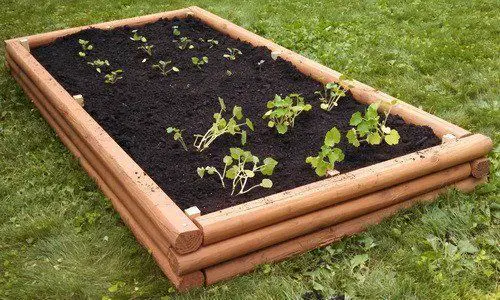
Image courtesy of Remove and Replace
So now that you have a little bit of an idea what each type of landscaping timber has to offer, let's take a look at what you should be looking for when you go shopping.
Keep in mind that the you need to match beauty with function, form, and durability. No one landscapes their yard with the idea that they are going to be replacing their hard work every couple of years.
Face it, the last thing you want to do, is to have no choice but to rip out your hard work just because the materials you chose did not stand up to the conditions they were exposed to.
Pressure Treated Lumber Issues
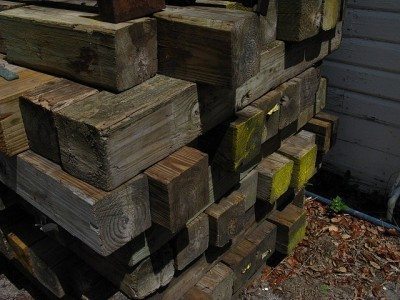
Image courtesy of Gardening Know How
But at the same time, if you are planning a vegetable garden ora fruit plant bedd, the last thing you want to do is introduce the chemicals found in CCA (Chromium, copper, arsenic) into the ground around your gardens.
The pressure treated lumber being sold today has a significantly lower level of CCA in it, but there is still the risk of it leaching into the ground in your gardens still exists. Keep the use of pressure treated lumber restricted to other areas of your yard such as lining driveways or building raised flower beds.
Worth noting, is that even pressure treated lumber will rot over the course of time, yet it will outlast most other forms of landscaping timbers.
Shape Plays a Part
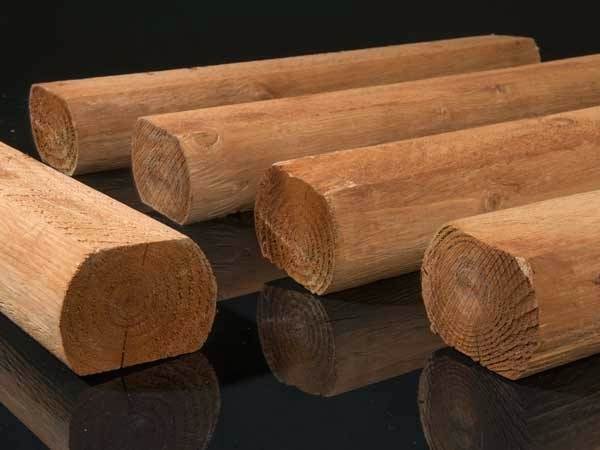
Timbers - Shape
While you might not realize it, the shape of the timbers plays a role in how successful your project is. While those perfectly round timbers might be appealing, they can be very hard to work with if you are building any type of wall.
A much better choice is to choose timbers that have two flat sides and two rounded sides. These are much easier to stack when crating walls, surrounds, flower garden surrounds, and anywhere you plan to install a landscaping timber wall.
Railroad Ties
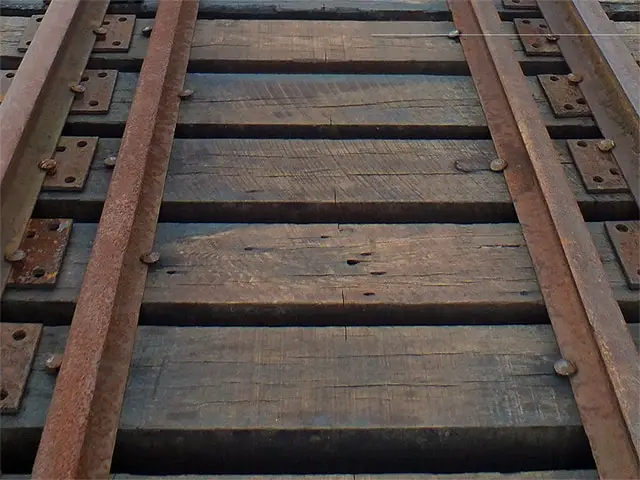
Image courtesy of Pacific Western Lumber
Landscapers and homeowners alike have been using railroad ties for more decades than most can remember. These timbers seem to last practically forever, but then they were soaked in creosote before they were used or sold.
Creosote is a preservative that has been used in railroad ties and phone poles to help preserve them for years. But, like the CCA used in pressure treating, creosote can leach out into the soil and into anything you plant there.
They are great to use for building retaining walls, walkways, foundations, and more, but never use them around your vegetable garden.
What About Plastic Landscaping Timbers

Plastic landscaping timbers
In recent years, we have seen the rise of reliable plastic landscaping timbers. They come in an incredibly diverse range of shapes, sizes, and colors. They do not leach toxins into the ground, do not rot, and will last for many years.
They are easy to work with, and are perfect for use around vegetable gardens, sandboxes, and anywhere your kids are likely to play. However, they are not as strong as natural wood timbers and are prone to swelling in size and warping in the sun.
Alternatives Using Landscape Timbers
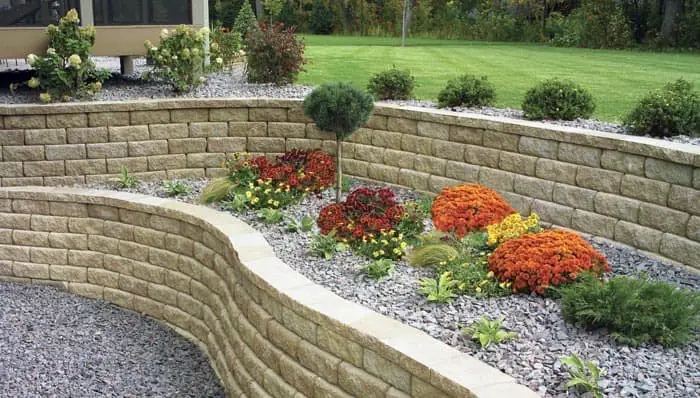
Timber garden soil erorion
If you prefer not to use landscaping timbers, there are other alternatives for you to consider. Both bricks and pavers are fairly inexpensive and unlike wood are not subject to the effects of time. They will not rot or become infested with damaging insects.
Some professionals have gone to using metal borders around ground level gardens as it is reasonably durable and can be painted.
Concrete Pavers
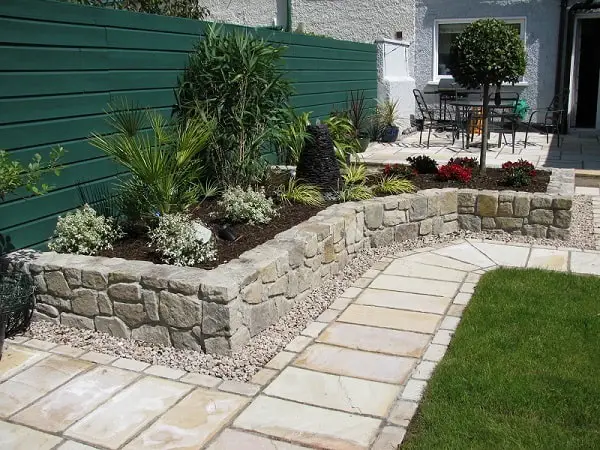
Landscaping Timbers - Concrete Pavers
One of the greatest things about today's concrete pavers, is that they come in an incredibly diverse range of sizes, shapes, and colors. Assembly is easy as you simply stack them to match the shape of the area you wish to enclose or the path you want to build.
They require virtually no maintenance unless you want to rinse them off from time to time. Depending on the style you choose, concrete pavers can be a relatively inexpensive option.
Bricks

Image courtesy of Roger Gladwell
Bricks make another good alternative to landscaping timbers. They can be a little more expensive that cement pavers. But, like pavers, they last forever and come in a range of styles, shapes, and colors. This makes them perfect for use in a number of applications.
You can simply stack them to create the walls or if you are sure you aren’t going to move them, cemented together to form a stronger structure. If you are building a long wall, be prepared as this is going to take a while and be sure you have a good pair of heavy duty leather gloves to protect your hands.
The only real problem you are likely to have with concrete pavers and bricks, is that weeds and grasses tend to grow in the cracks, giving you yet another cleanup chore to add to your list. However, they are among the easiest types of border, edging, and walls to build.
The Last Word
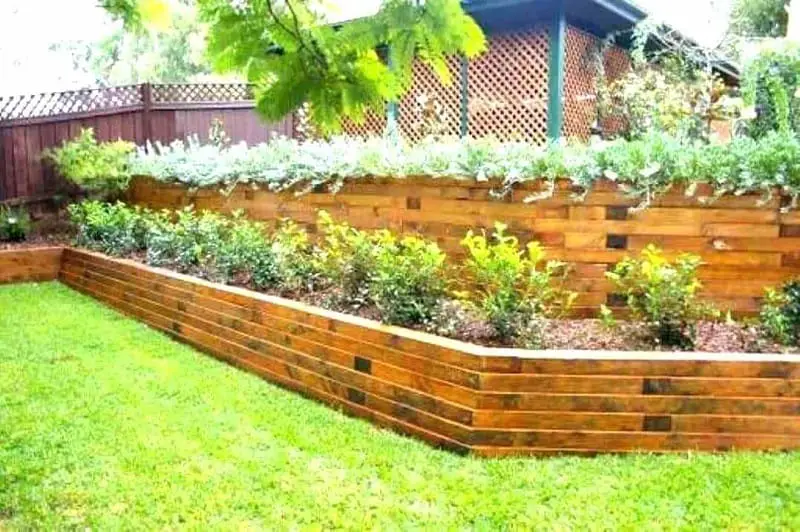
Landscape timbers
Long before you spend the first dime on landscaping timbers, you need to take a good look at your property and what areas you plan to landscape. This will make a big difference in the materials you choose.
One of the best things about doing your own landscaping, is that you can use a range of the different types of landscaping timbers and materials to create the yard of your dreams.
I hope you have enjoyed reading this as much as I have enjoyed writing it. If you have enjoyed learning about landscaping timber, please let me know. If you have any information you would like to see here, please contact me here
Thank you for reading this guide to landscaping timbers, I hope you found it useful.
Related Articles:
